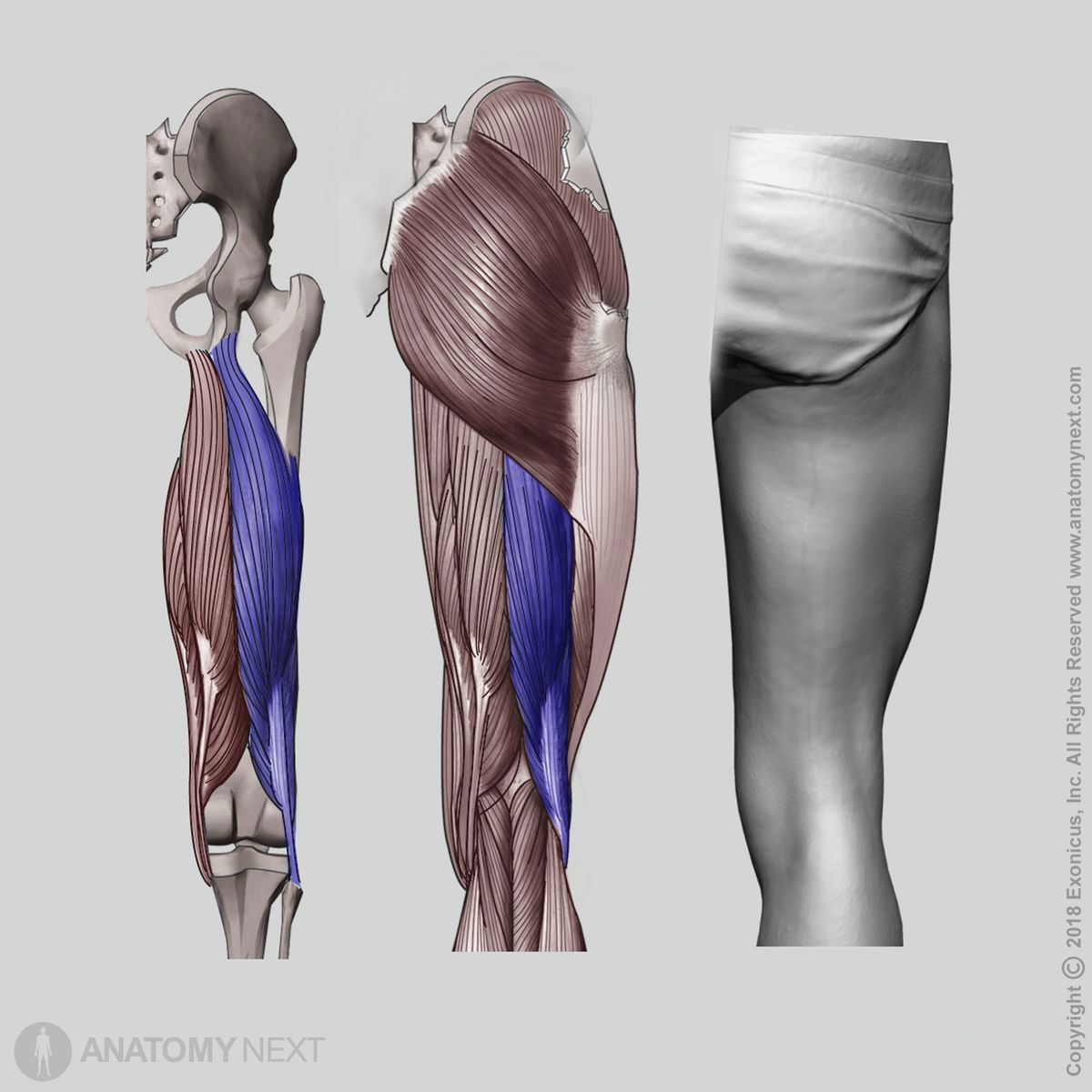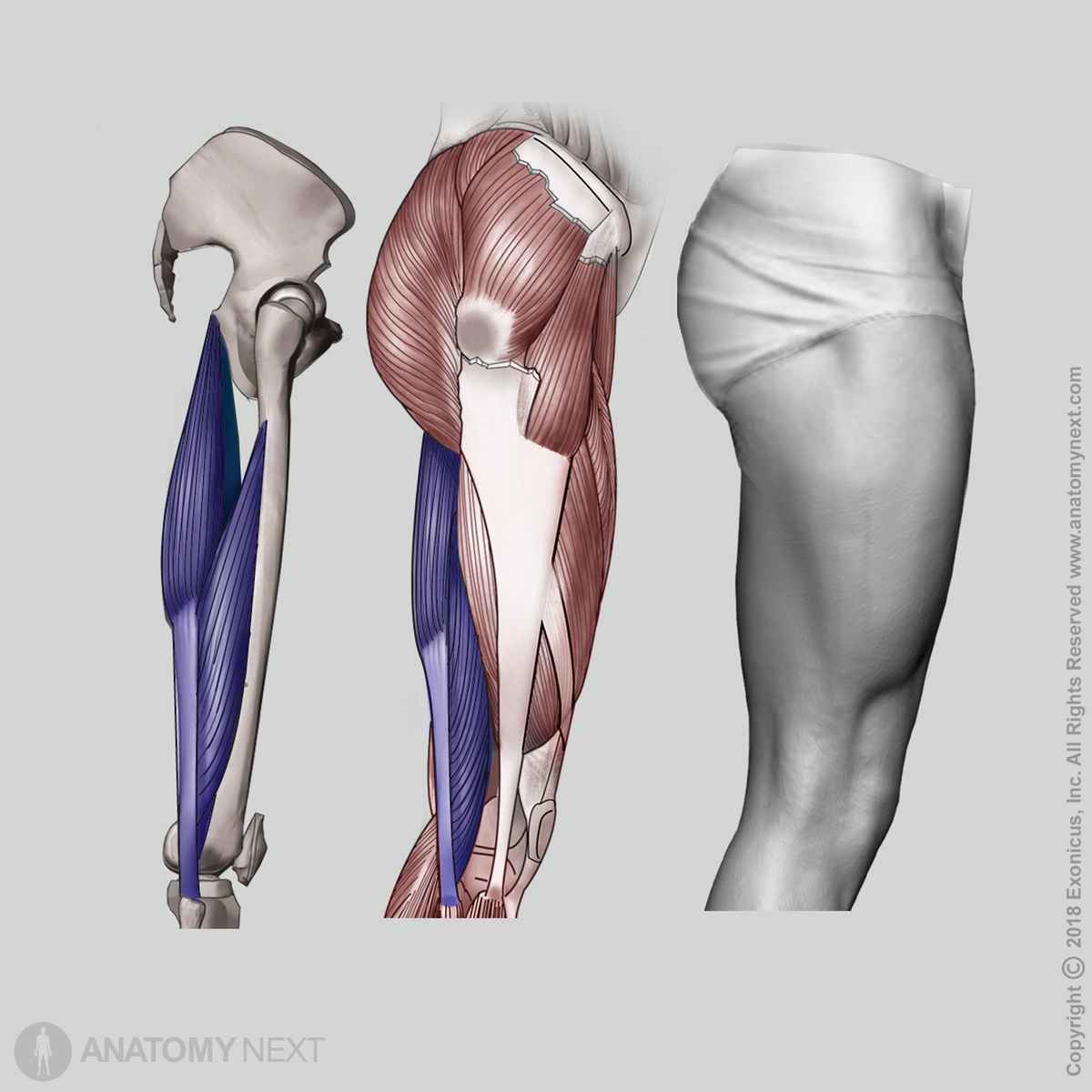- Anatomical terminology
- Skeletal system
- Joints
- Muscles
- Head muscles
- Neck muscles
- Muscles of upper limb
- Thoracic muscles
- Muscles of back
- Muscles of lower limb
- Pelvic muscles
- Muscles of thigh
- Anterior compartment
- Medial compartment
- Posterior compartment
- Muscles of leg
- Muscles of foot
- Heart
- Blood vessels
- Lymphatic system
- Nervous system
- Respiratory system
- Digestive system
- Urinary system
- Female reproductive system
- Male reproductive system
- Endocrine glands
- Eye
- Ear
Biceps femoris
The biceps femoris (Latin: musculus biceps femoris) is a long and thick two-headed muscle of the lower limb located in the posterior compartment of the thigh. It is the most lateral muscle of the posterior compartment stretching between the hip bone, femur and fibula. Together with the semitendinosus and semimembranosus, the biceps femoris is also known as one of the hamstring muscles. As mentioned above, the biceps femoris has two heads - long and short.
| Biceps femoris | |
| Origin | Long head - ischial tuberosity Short head - lateral lip of linea aspera, lateral supracondylar line of femur |
| Insertion | Lateral aspect of fibular head |
| Action | Entire muscle - flexion and external rotation of leg Long head - extension and external rotation of thigh |
| Innervation | Long head - tibial nerve (L5 - S2) Short head - common peroneal (fibular) nerve (L5 - S2) |
| Blood supply | Perforationg branches of deep femoral artery, medial circumflex femoral artery, inferior gluteal artery, branches of popliteal artery |

Origin
The long head of the biceps femoris muscle originates from the ischial tuberosity located on the ischial ramus. In contrast, the short head arises from the lateral lip of the linea aspera and lateral supracondylar line of the femur.

Insertion
Both biceps femoris heads insert on the lateral aspect of the fibular head.
Action
The biceps femoris muscle provides flexion and external rotation of the leg at the knee joint. The long head of the muscle is also responsible for extension and external rotation of the thigh at the hip joint.
Innervation
The long head of the biceps femoris is innervated by the tibial nerve (L5 - S2), but the short head is supplied by the common peroneal (fibular) nerve (L5 - S2). Both nerves are terminal branches of the sciatic nerve, which arises from the sacral plexus.
Blood supply
The biceps femoris muscle is mainly supplied by perforating branches and medial circumflex femoral artery of the deep femoral artery. Additionally, it is supplied by the inferior gluteal artery of the internal iliac artery and branches of the popliteal artery.